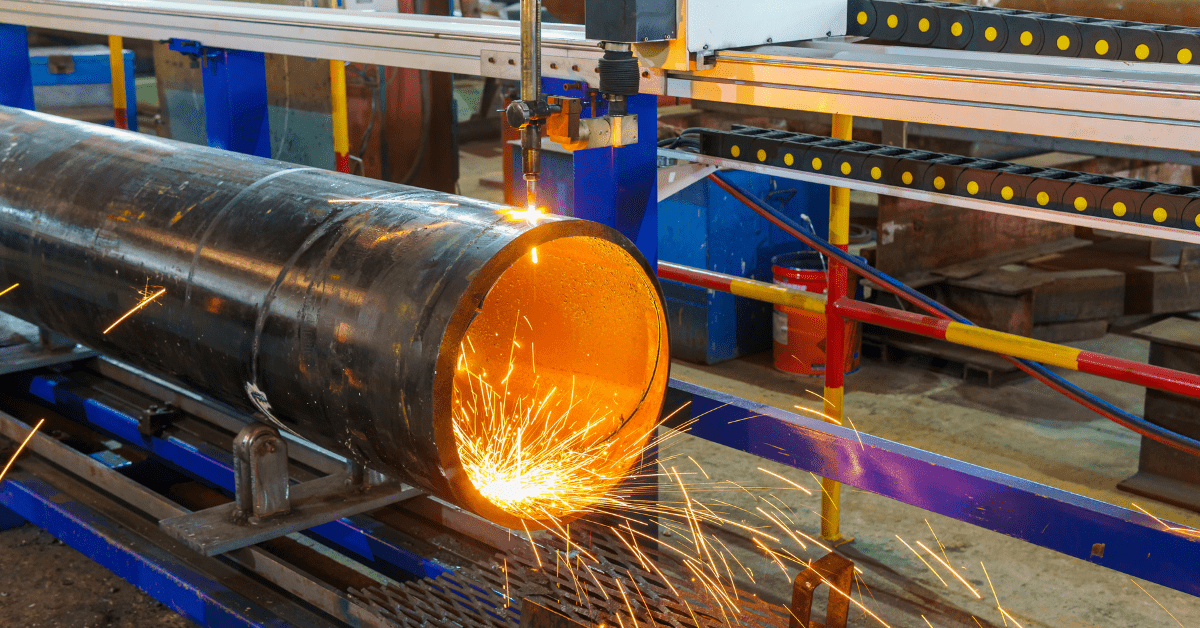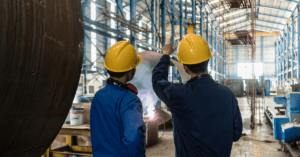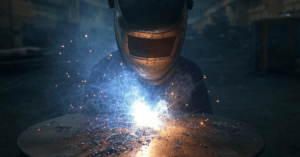In industries such as oil and gas, chemical processing, and construction, piping systems are essential for transporting liquids, gases, and other materials safely and efficiently. Piping fabrication is the process of creating these piping systems to meet the specific requirements of each project. It involves cutting, welding, bending, and assembling pipes and components to form a functional system capable of withstanding high pressures, extreme temperatures, and corrosive substances. Here’s everything you need to know about piping fabrication, how it works, and why it plays a crucial role across various industries.
What is Piping Fabrication?
Piping fabrication is the process of manufacturing pipes and pipe systems to meet the precise specifications of a project. Unlike off-the-shelf piping, fabricated piping systems are customized to suit specific applications, environments, and regulatory standards. Fabrication typically includes several stages, from cutting and shaping pipes to assembling and testing the entire system.
Fabrication is often done in specialized facilities, where skilled technicians use advanced machinery to achieve high precision and quality. Once completed, fabricated piping systems are transported to the installation site, where they’re assembled to create a functional network. This process ensures that the piping meets industry standards, safety regulations, and the unique requirements of the project.
Key Steps in the Piping Fabrication Process
Piping fabrication involves multiple steps, each crucial to ensuring a safe and efficient system. Here’s a breakdown of the typical piping fabrication process:
- Design and Planning
– The fabrication process starts with detailed planning and design. Engineers and designers create blueprints and specifications, determining the materials, dimensions, and layout of the piping system. This stage ensures that the system will function correctly and meet regulatory standards.
– 3D modeling software is often used to visualize the piping layout, simulate flow, and identify any potential issues before fabrication begins.
- Material Selection
– Material selection is critical to the longevity and safety of a piping system. Factors like pressure, temperature, and the type of substances being transported influence the choice of materials, which can range from stainless steel and carbon steel to copper and specialized alloys.
– Selecting the right material is essential to avoid corrosion, ensure durability, and prevent leaks or failures in the system.
- Cutting and Shaping
– Once materials are chosen, pipes are cut to the required lengths and shaped to fit the layout of the system. Techniques such as saw cutting, plasma cutting, and CNC (Computer Numerical Control) machining are used to achieve precise cuts and shapes.
– Some systems require curved or bent pipes to accommodate tight spaces or complex layouts. Bending machines and specialized equipment shape these pipes without compromising their structural integrity.
- Welding and Joining
– Welding is one of the most important steps in piping fabrication, as it connects individual pipe sections into a continuous system. Techniques like MIG, TIG, and arc welding are used depending on the material and application.
– Other joining methods, like flanging, threading, or using gaskets, are sometimes used to allow for easy disassembly and maintenance.
- Assembly and Fitting
– After individual pipes are cut, shaped, and joined, they are assembled into sections that will form the final piping system. Fitting involves connecting pipes to valves, flanges, and other components, ensuring a complete and functional system.
– This stage requires careful alignment and quality checks to ensure that all parts fit perfectly and the system is ready for testing.
- Inspection and Testing
– Inspection and testing are essential to verify that the fabricated piping system meets all design, quality, and safety standards. Tests like hydrostatic pressure testing, non-destructive testing (NDT), and visual inspections ensure there are no leaks, defects, or weak points.
– Inspection standards are often set by industry regulations and certifications, such as ASME (American Society of Mechanical Engineers) and API (American Petroleum Institute) standards.
- Finishing and Coating
– For systems exposed to harsh environments, a finishing process adds protective coatings or paint. Coatings like epoxy or galvanization protect the pipes from corrosion and chemical damage, extending the lifespan of the system.
– Proper finishing ensures that the piping system remains durable and reliable in challenging conditions.
Why Piping Fabrication Matters
Piping fabrication may seem like a technical aspect of industrial projects, but it plays a vital role in ensuring safety, efficiency, and reliability. Here’s why piping fabrication is so important:
- Ensures Safety and Compliance
Piping systems often carry hazardous materials, such as chemicals, oil, and gas. Proper fabrication minimizes the risk of leaks, ruptures, or failures, protecting both the environment and personnel. By following industry standards and certifications, fabricated piping systems meet safety and compliance requirements, reducing the risk of accidents and legal liabilities.
Benefits of Compliance:
– Minimizes risks of hazardous leaks or contamination.
– Ensures adherence to safety regulations, such as ASME and API standards.
– Reduces liability for companies, protecting them from fines or penalties.
- Improves System Efficiency
A well-fabricated piping system ensures smooth, efficient flow, reducing energy consumption and operational costs. Precision in cutting, welding, and joining prevents unnecessary friction, blockages, or leaks, maximizing the system’s performance.
Efficiency Benefits:
– Lowers energy consumption by reducing friction and pressure drops.
– Increases flow efficiency, improving productivity.
– Reduces maintenance needs, saving time and resources.
- Custom Solutions for Unique Applications
Every industrial project has unique requirements, from specific layouts to challenging environments. Custom piping fabrication provides the flexibility to design and create systems that perfectly fit each project’s needs. Whether it’s a complex refinery setup or a specialized HVAC system, custom fabrication ensures a solution tailored to the project’s demands.
Advantages of Customization:
– Fits specific project layouts, maximizing space and efficiency.
– Allows for material and design choices suited to the application.
– Enhances overall functionality and reliability.
- Enhances Durability and Longevity
Piping systems are exposed to high pressures, extreme temperatures, and corrosive substances. Proper fabrication, combined with high-quality materials and coatings, extends the system’s life, preventing costly repairs or replacements down the line. By ensuring structural integrity, fabrication reduces the likelihood of wear and tear, enhancing long-term durability.
Durability Benefits:
– Reduces frequency of replacements and repairs.
– Withstands harsh operating conditions, like high temperatures and pressure.
– Lowers the risk of corrosion, cracking, and other forms of degradation.
- Cost-Effectiveness and Reduced Downtime
Custom-fabricated piping systems are designed to fit precisely, minimizing waste, leaks, and energy loss. Efficient fabrication and quality materials reduce the need for maintenance, thereby lowering downtime and operational disruptions. Over time, the reduced need for repairs and increased efficiency make piping fabrication a cost-effective investment.
Cost Savings:
– Minimizes operational disruptions due to leaks or breakdowns.
– Reduces maintenance costs and downtime.
– Offers long-term savings by enhancing system efficiency and lifespan.
Choosing the Right Piping Fabrication Provider
Selecting the right piping fabrication provider is crucial to the success of any project. Here are a few key factors to consider:
– Experience and Expertise: Look for a provider with experience in your industry and familiarity with the relevant safety and quality standards.
– Customization Capabilities: Ensure they can customize piping solutions to your specific needs, including material selection, coating, and design.
– Quality Assurance: Verify that they follow strict quality control practices, including inspection and testing, to guarantee the integrity of the fabricated pipes.
– Technology and Equipment: Advanced equipment, like CNC machines and automated welding tools, contributes to high precision and quality.
– Turnaround Time and Reliability: Choose a provider with a track record of delivering on time and meeting project deadlines without compromising quality.
Final Thoughts
Piping fabrication is essential to creating safe, efficient, and durable piping systems for a wide range of industries. By transforming raw materials into custom-fitted, high-quality components, piping fabrication supports the smooth flow of materials, ensures compliance with industry standards, and enhances overall system performance. Whether you’re working on an oil refinery, chemical processing plant, or commercial construction project, investing in quality piping fabrication ensures that your systems are built to last, function reliably, and meet the demands of modern industry.
For companies looking to optimize performance, reduce risks, and lower long-term costs, choosing a trusted piping fabrication provider is a critical first step. With the right fabrication partner, you can rest assured that your piping systems will be safe, efficient, and ready to withstand the toughest operational challenges.
Fabrication Services, and let’s build something strong together.
Contact us today to learn how Wikota’s Fab Shop can help with your fabrication needs.
Serving North America – We ship completed projects anywhere in the US.




